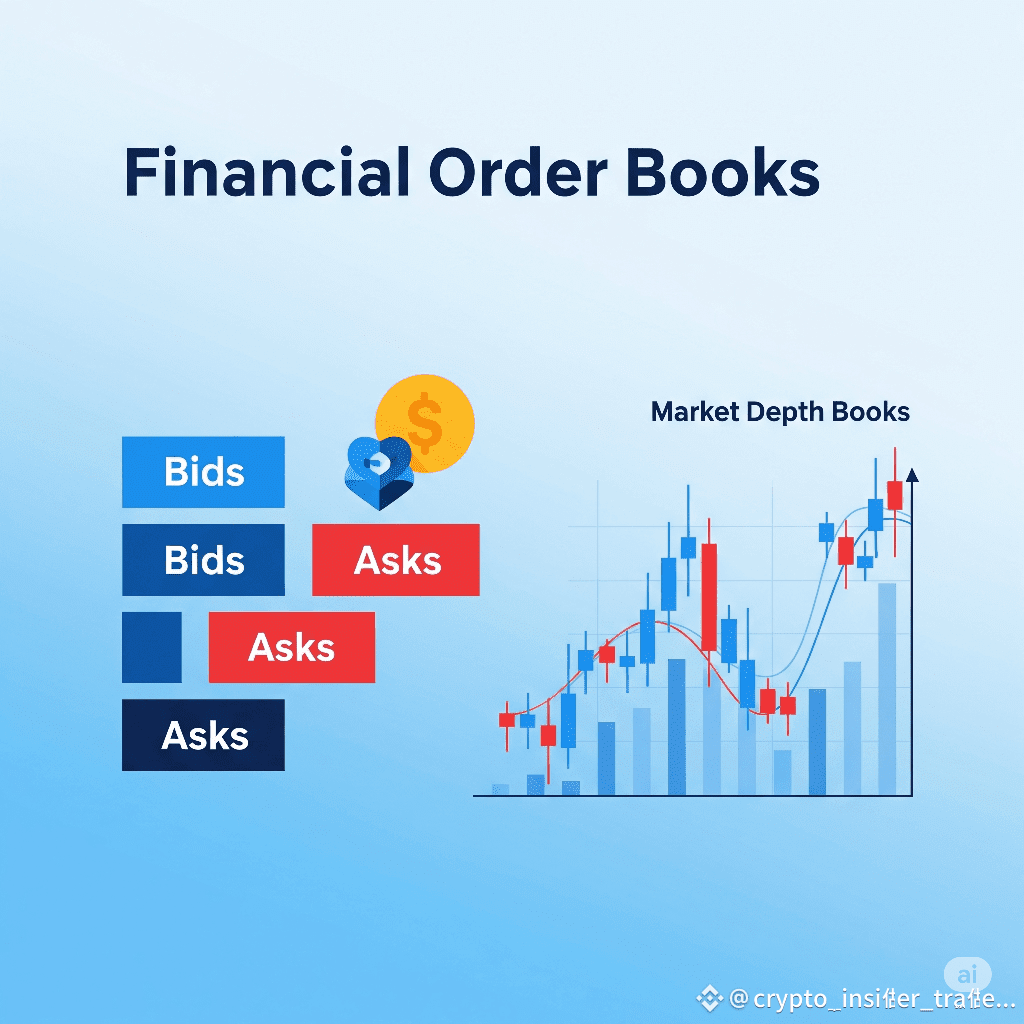Have you ever wondered how prices are determined in the fast-paced world of financial markets? Or how buyers and sellers connect to execute trades? The answer lies in a powerful, often unseen, mechanism: **the order book.**
Far from being a dusty ledger, an order book is the dynamic core of any exchange, from traditional stock markets to the buzzing cryptocurrency world. It's a real-time, transparent list of all outstanding buy and sell orders for a particular financial instrument, like a stock, cryptocurrency, or commodity. Think of it as the ultimate matchmaking service for investors, constantly revealing the supply and demand forces at play.
### Deconstructing the Order Book: Bids and Asks
At its simplest, an order book is divided into two main sections:
* **Bids (Buy Orders):** These are orders from buyers specifying the maximum price they are willing to pay for an asset and the quantity they wish to acquire. Bids are always displayed in descending order of price, with the highest bid at the top. This represents the immediate demand for the asset.
* **Asks (Sell Orders) / Offers:** These are orders from sellers indicating the minimum price they are willing to accept for an asset and the quantity they are willing to sell. Asks are always displayed in ascending order of price, with the lowest ask at the top. This represents the immediate supply of the asset.
The difference between the highest bid and the lowest ask is known as the **bid-ask spread**. This spread represents the cost of immediate execution and is a key indicator of market liquidity. A narrow spread suggests a highly liquid market with plenty of buyers and sellers, while a wide spread might indicate less activity.
### How Does an Order Book Actually Work?
The magic of the order book happens continuously as new orders arrive and existing orders are filled:
1. **Placing an Order:** When you decide to buy or sell an asset, you place an order through your brokerage or exchange platform. This order specifies the asset, the quantity, and crucially, the **price type**.
* **Market Orders:** These are orders to buy or sell immediately at the best available price in the order book. If you place a market buy order, it will automatically match with the lowest available ask. If you place a market sell order, it will match with the highest available bid. Market orders guarantee execution but not a specific price.
* **Limit Orders:** These are orders to buy or sell at a specific price or better. If you place a limit buy order for 100 shares of XYZ at $50, it will only execute if the price drops to $50 or below. If you place a limit sell order at $55, it will only execute if the price rises to $55 or above. Limit orders guarantee price but not immediate execution.
2. **Matching Orders:** The order book's core function is to match willing buyers with willing sellers.
* When a new **buy order** comes in at a price equal to or higher than an existing **sell order**, a trade is executed. The buy order "takes" the sell order.
* Conversely, when a new **sell order** comes in at a price equal to or lower than an existing **buy order**, a trade is executed. The sell order "takes" the buy order.
This continuous matching process is what drives price discovery. The last traded price is essentially where the most recent buyer and seller agreed to transact.
3. **Queueing Up:** If an order cannot be immediately matched (e.g., a limit buy order placed below the current lowest ask), it is added to the order book. Orders are typically prioritized by price (better prices first) and then by time (orders placed earlier at the same price are prioritized). This creates a transparent queue, visible to all market participants.
### Why is the Order Book So Important?
The order book is more than just a list; it's a vital tool for understanding market dynamics:
* **Price Discovery:** It's the primary mechanism by which the fair market price of an asset is determined in real-time based on the interaction of supply and demand.
* **Liquidity Assessment:** The depth of the order book (the number of orders at various price levels) gives an excellent indication of an asset's liquidity. A "deep" order book with many orders on both sides of the spread suggests easy entry and exit without significantly impacting the price.
* **Market Sentiment:** By observing the concentration of bids and asks, traders can glean insights into market sentiment. A disproportionate number of buy orders at higher prices might indicate bullish sentiment, while a heavy concentration of sell orders could suggest bearishness.
* **Transparency:** For active traders, the order book offers invaluable transparency into the immediate market landscape, allowing them to make more informed trading decisions.
### Beyond the Basics: Order Book Variations
While the core principles remain the same, order books can have variations:
* **Central Limit Order Books (CLOBs):** This is the most common type, where all orders from all participants are aggregated into a single, centralized order book.
* **Dark Pools:** These are private exchanges where institutional investors can trade large blocks of securities anonymously, without their orders being visible on the public order book. This helps to prevent market impact from large trades.
In conclusion, the order book is the unsung hero of financial markets, constantly working behind the scenes to facilitate trades, determine prices, and reflect the ever-shifting balance of supply and demand. Understanding its mechanics is not just for professional traders; it's a fundamental insight into how the financial world truly operates. So, the next time you see a stock price fluctuate, remember the intricate dance of bids and asks playing out within the order book, the true heartbeat of the market.
#GENIUSAct #BinanceHODLerERA #USCryptoWeek #AltcoinSeasonLoading #orderbook 
